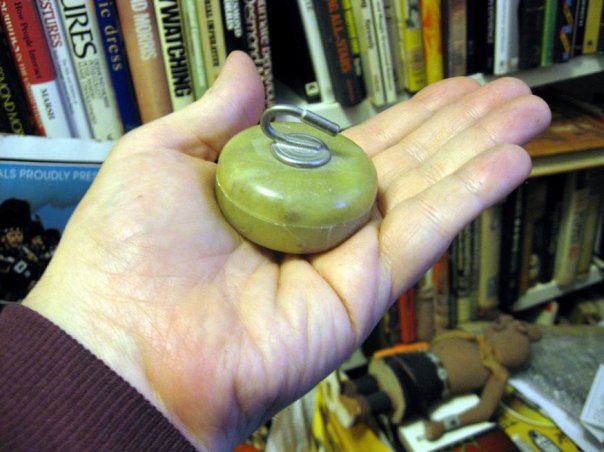Curling IS Scottishin 2014 Tom Doran wrote: "..to Jennifer Jones of the Canadian team: it is NOT a Canadian sport (as she just said). Originated in Medieval Scotland and brought to Canada by Scottish emigrants. Geesh. And to the newscasters who insist of saying it is England's curling team? Hello? All the members are Scots. Britain if you must, but Scottish in reality." I don't recall Ms Jones or her original statement, but Tom, as usual, is correct.  No, Tom's hand is not huge, that's just a tiny curling stone. According to olympic.org curling is: "One of the world’s oldest team sports, curling originated in the 16th century in Scotland, where games were played during winter on frozen ponds and lochs. The earliest-known curling stones came from the Scottish regions of Stirling and Perth and date from 1511. In the 1600s, stones with handles were introduced." According to scottishcurling.org it's so unlikely that any other country or culture began curling simply because they lacked the stones. Specifically, hard igneous rock. Plus, in my opinion, the Scots just love to throw around stones. There weren't any cameras around in the 16th century to document the first curling games in Scotland, but today we can look at photos recorded in this blog. It's a must-read if you want to know everything about this sport. Check out this page for more info. Tom and I would enjoy watching the Olympic Games when curling was on. It's hypnotic.
The Scottish WildcatThe Scottish Wildcat is one of the rarest animals in the world; there are only 35 of them left on earth. A third of them live in the publicly owned Clashindarroch Forest in the Scottish Highlands, but they are in danger from logging by the Scottish Government’s Forestry Commission Scotland. If this doesn’t stop immediately, the wildcat will become extinct. Save the Scottish wildcat by protecting Clashindarroch Forest! You can also get more info fromm Scottish Wildcat Haven on Facebook and the Scottish Wildcat Haven web site.
|
